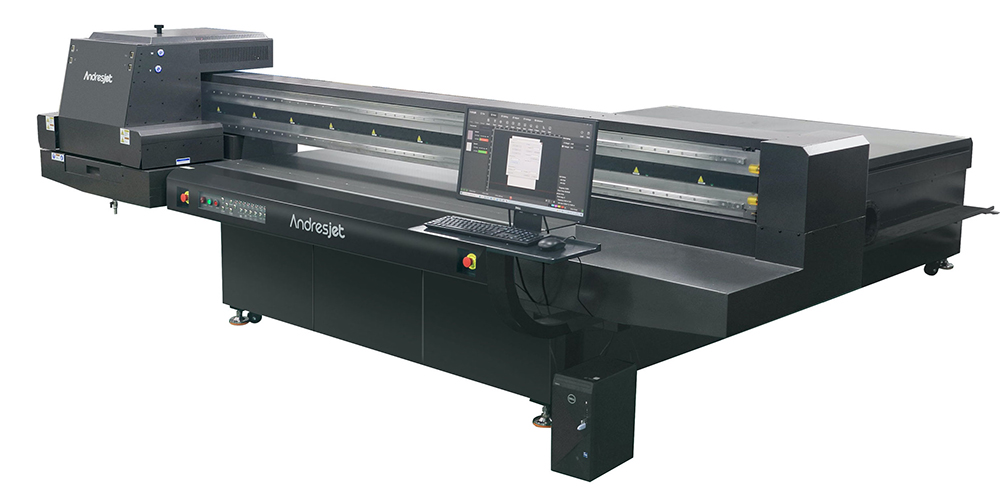UV Flatbed Printer: The Benefits of Automation in Printing Workflow
UV Flatbed Printer: The Benefits of Automation in Printing Workflow
In the realm of digital printing, technological advancements have revolutionized traditional methods, making processes more efficient, cost-effective, and versatile. Among these innovations, UV flatbed printers have emerged as a game-changer, particularly in their ability to integrate automation into the printing workflow. This article delves into the numerous benefits that automation brings to UV flatbed printing, highlighting how it transforms production capabilities, enhances quality control, and streamlines operations for businesses across various industries.

The Evolution of UV Flatbed Printing
UV flatbed printers are designed to print directly onto flat surfaces or slightly curved substrates, offering versatility in material handling. These printers utilize UV-curable inks that instantly dry when exposed to ultraviolet light, enabling instant curing and reducing the risk of smudging or bleeding. This technology has significantly expanded the range of printable materials, including plastics, glass, metal, wood, and more, making it a preferred choice for diverse applications such as signage, product labeling, decoration, and prototyping.
With the integration of automation, UV flatbed printers have further elevated their capabilities, allowing for unattended printing, precise control over print parameters, and seamless integration into existing production lines. Automation in printing workflow refers to the use of machinery, software, and robotic systems to perform tasks that were traditionally manual, thereby increasing efficiency, reducing human error, and enhancing overall productivity.
Benefit 1: Increased Efficiency and Productivity
One of the most profound advantages of automation in UV flatbed printing is the significant boost in efficiency and productivity. Automated systems can execute tasks with unparalleled speed and accuracy, minimizing downtime between print jobs. For instance, automated material loading and unloading systems ensure that the printer is constantly supplied with materials, reducing idle time and maximizing throughput.
Moreover, integrated software solutions optimize job scheduling and queue management, enabling printers to handle complex, high-volume projects with ease. This level of efficiency translates to shorter lead times, increased capacity to handle larger orders, and ultimately, higher revenue generation for businesses.
Benefit 2: Enhanced Quality Control
Consistency and precision are paramount in printing, especially for businesses seeking to maintain brand integrity across their marketing materials and product packaging. Automation in UV flatbed printing enables precise control over ink deposition, color accuracy, and print resolution, ensuring that every print meets stringent quality standards.
Advanced printhead technology, combined with sophisticated software algorithms, allows for micro-adjustments in real-time, compensating for variations in material surface, ink viscosity, and ambient conditions. This level of precision is difficult to achieve through manual processes, making automation a crucial factor in delivering flawless prints consistently.
Benefit 3: Cost Savings and Reduced Waste
Automation in UV flatbed printing also contributes to significant cost savings and waste reduction. By minimizing human intervention, businesses can reduce labor costs associated with manual setup, monitoring, and intervention during the printing process. Automated systems are designed to optimize ink usage, reducing over-inking and minimizing ink waste.
Furthermore, the ability to print directly onto various substrates eliminates the need for intermediate steps such as lamination or mounting, further cutting costs and reducing material waste. UV-curable inks also offer excellent adhesion properties, reducing the likelihood of print failures and subsequent rework or scrap.
Benefit 4: Versatility and Flexibility
UV flatbed printers with automated features offer unparalleled versatility and flexibility in material handling and print applications. Automated systems can accommodate a wide range of substrate sizes, shapes, and thicknesses, allowing businesses to diversify their product offerings without investing in additional equipment.
Moreover, the ability to print white ink and multiple layers enables the creation of vibrant, opaque prints on transparent or dark materials, further expanding the creative possibilities. This versatility makes UV flatbed printers with automation an ideal solution for businesses seeking to innovate and differentiate their products in a competitive market.
Benefit 5: Streamlined Workflow and Integration
Automation in UV flatbed printing streamlines the entire workflow, from pre-press to post-press operations. Integrated software solutions facilitate seamless file transfer, job management, and color management, eliminating bottlenecks and ensuring smooth coordination between design, printing, and finishing stages.
For businesses operating within larger manufacturing or production environments, UV flatbed printers with automation capabilities can be easily integrated into existing workflows, enhancing overall production efficiency. This integration capability allows for centralized control and monitoring, simplifying production planning and resource allocation.
Conclusion
In conclusion, the benefits of automation in UV flatbed printing are multifaceted, transforming the way businesses approach digital printing. From increased efficiency and productivity to enhanced quality control, cost savings, versatility, and streamlined workflow, automation elevates UV flatbed printing to new heights of performance and capability.
As technology continues to advance, the integration of automation in UV flatbed printing will only become more sophisticated, offering even greater opportunities for businesses to innovate, optimize their operations, and stay ahead in the competitive landscape. Embracing automation in UV flatbed printing is not just a matter of staying current; it is a strategic decision that paves the way for long-term growth and success.
